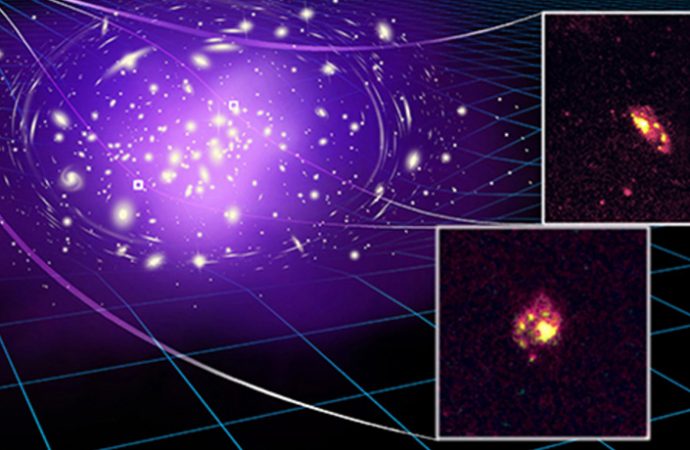New observation could give insight into how such star systems sprout arms
Astronomers have spotted a spiral galaxy more ancient than any seen before.
The galaxy, called A1689B11, emitted its light 11 billion years ago, just 2.6 billion years after the Big Bang. Researchers had previously reported a spiral galaxy that dates to 10.7 billion years ago.
Astronomer Tiantian Yuan at Swinburne University of Technology in Melbourne, Australia and colleagues found the new record-holder thanks to a closer cluster of galaxies, which acted as a gravitational lens that helped astronomers produce two magnified images of A1689B11 (SN: 3/10/12, p. 4). The team reported the find online at arXiv.org on October 31.
About 70 percent of galaxies in the modern universe display spiral arms. These gas-filled limbs are often where new stars form, and can constrain how big a galaxy’s central black hole grows. A1689B11 formed stars about 10 to 20 times faster than modern spiral galaxies but comparable to other similar galaxies of the same age. Unlike these other ancient galaxies, but like the Milky Way, A1689B11 rotated calmly with very little turbulence.
Astronomers think that could suggest A1689B11 marks a transition point in the evolution of such spiral assemblages. The further back in the universe’s history astronomers look, the rarer spiral galaxies become (SN: 9/2/06, p. 157). Studying galaxies like A1689B11 can help reveal when and how the galaxies started to grow arms, and how those arms influenced the galaxies’ later evolution.
Source: Science News

































Leave a Comment
You must be logged in to post a comment.